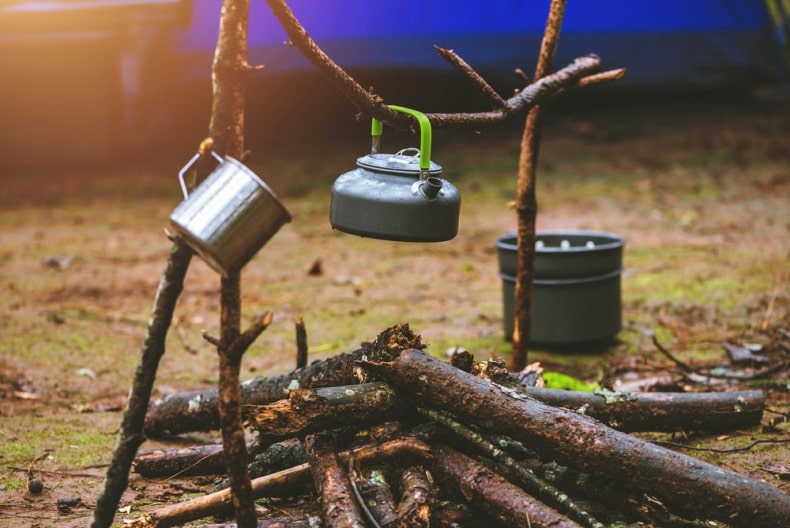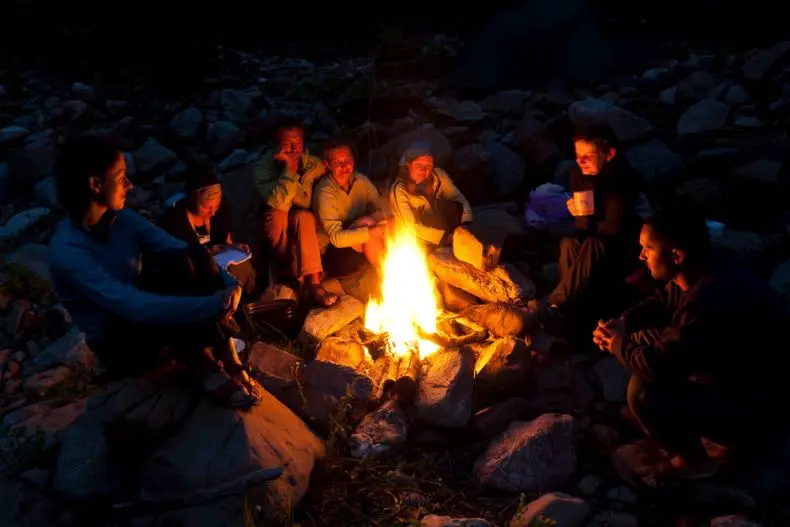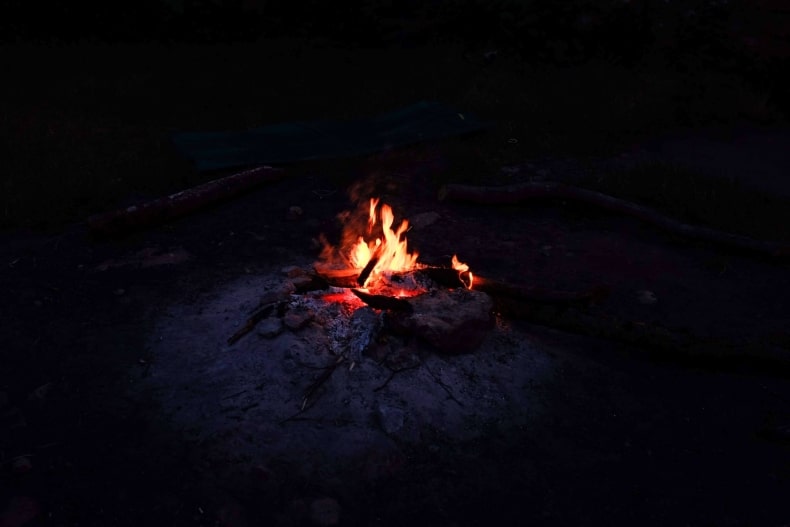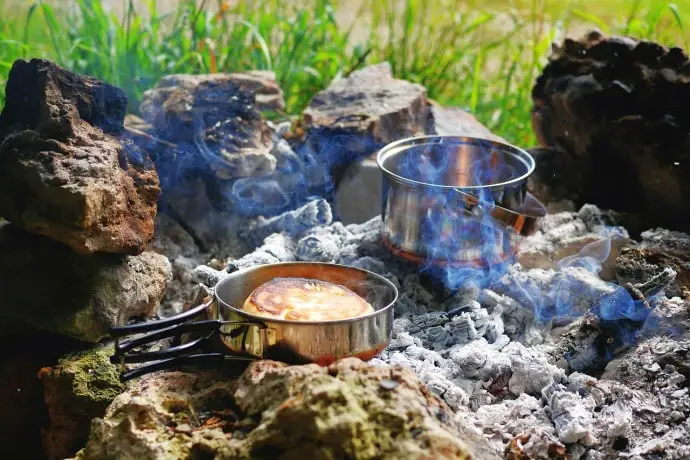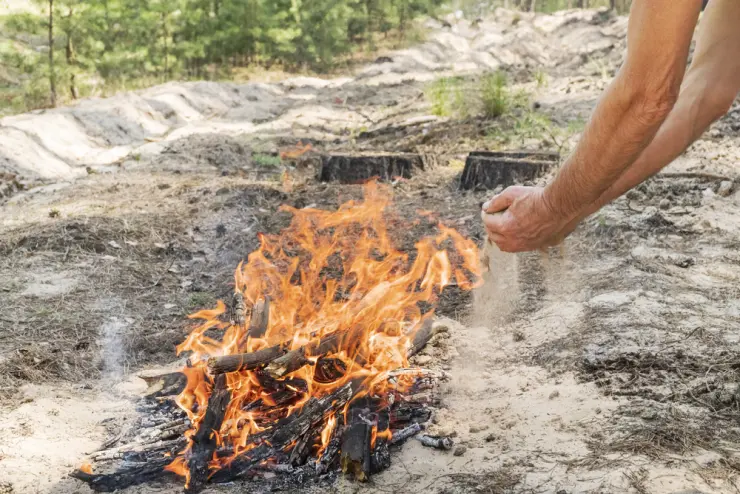When you’re in the wilderness camping or simply trying to survive, very few things will be more important than a campfire. It can keep you warm, cook things, boil water to make it safe to drink, and much more. Yet you might have to deal with rainfall. That could be why so many want to know how to keep a campfire going in the rain.
The problem, obviously, is that water puts out fire most of the time. It can be pretty frustrating to deal with too. You might work for hours to get a fire burning only for rainfall to kill all that hard work.
Even if it’s not cold outside, rain can make you cooler and a proper fire will keep you from getting things like hypothermia. Wet weather can create problems for your hands and feet too, as blisters often occur when friction meets wet.
Something like just walking can wear blisters and sores onto your feet. Usually, this occurs from sweat build-up but will also happen when your shoes and/or socks get wet from the rain too. Now you’re on a first-class trip to Hurtville, and it might only be going one-way.
We don’t like to see people struggle, so we’re going to tell you the best ways to keep your fire burning when raining. Let’s get started!
The Preventive Method
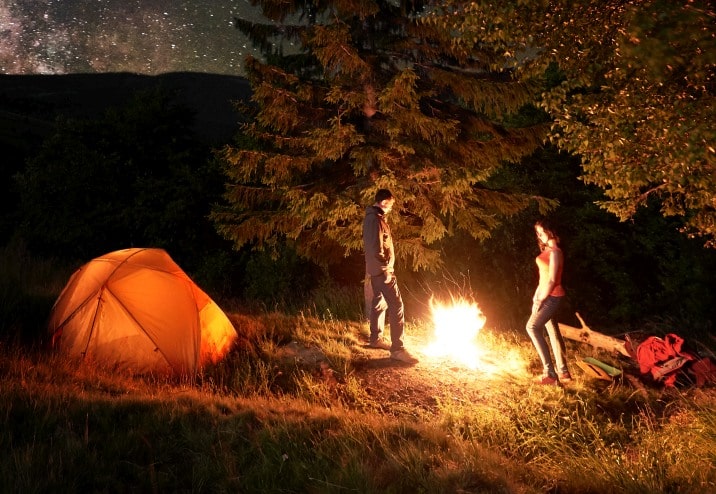
One thing you need to keep in mind going in is that you clearly are better off preventing a problem than trying to fix it. What we mean by this is that you can prevent rainfall from drastically affecting your fire. This will work even if you’re dealing with a good bit of rainfall.
Before you start a fire, think about your location. If you can find an area surrounded by trees it might not be a bad idea to set up camp here. Unless you’re in a place where there’s a lot of snow. Being under trees won’t actually help as much then. However, for just rain? It could be great.
Plus, this can be great when it gets hotter out. You’re going to be dealing with so much heat that some shade could be very useful.
You want to be smart about how to build your fire anyway. When making one for camp, you want to surround it with rocks. This prevents the fire from getting out of control and spreading wildly into your camp.
However, to keep a fire going in the rain you will merely make a fire pit in the ground and put rocks all over it. You’ll need the pit to be at least 6 inches deep for this to work correctly. Then, build your fire upon those rocks.
You want the rocks to be small, of course. Stone is the best thing for this but if you have a limited amount or none, then small rocks are your best option.
You’ll then want to surround the pit with rocks too, but leave a section for water to exit so that it won’t build up. By doing this, any water that comes won’t have anywhere to stay and as long as you keep adding to it during the rain, it should keep going.
Burn Baby, Burn!
As mentioned in the last section, you can isolate the fire as best you can from possible rain issues. However, you will still need to keep it going by adding to it. Your best bet is to continue to use as much dry wood as you have available.
The more things get wet, the harder the fire will have to work. This is why we’d recommend before use, sit your wood or burning materials near the fire but not in it. The heat should help to remove a good portion of the water before you throw it on the fire.
Of course, if you can simply keep the materials out of the rain at all, then you should. Obviously, we’d say the same about the fire too.
Roofing The Fire
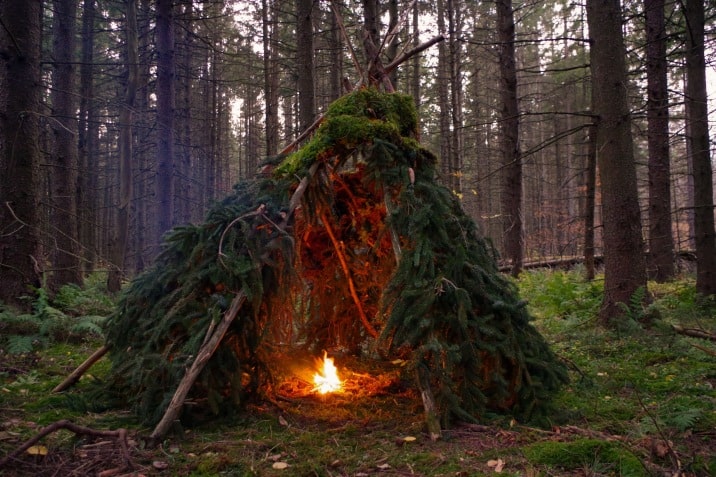
While it’s called something different by many people, “roofing the fire” basically means to have something over your fire to keep it safe from the rain. The thing to keep in mind here is that you don’t want to catch your campsite on fire nor any trees or anything.
This means you need to maintain your fire to fit the roofing. Therefore, it does not need to get to where the flames will touch the roof but rather be as low as possible from the roofing you have over it.
For example, let’s say you use your tent to be your roofing. The average tent height is 5 to 8 feet, so your fire would need to be 3 to 6 feet maximum in height. However, inside a tent, the size could be as small as 1 to 2 feet max and work perfectly.
In fact, we’d say this is the highest it should be inside a tent….especially when closed.
If you decide to build roofing from branches and leaves, the same principle applies. You want it to be low enough not to cause any possible issue with the roofing above you. Of course, if your roofing is very high or made from metal, you have less to worry about in terms of fire height and size.
Either way, you still don’t want it to get out of control.

